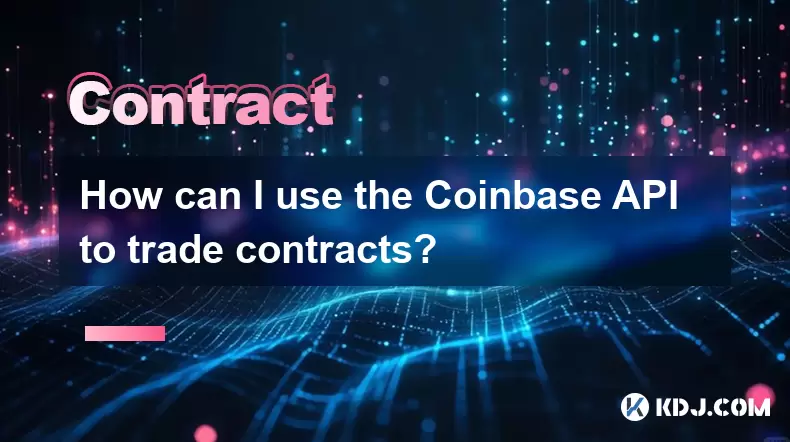-
 Bitcoin
Bitcoin $119000
-2.21% -
 Ethereum
Ethereum $4315
1.01% -
 XRP
XRP $3.151
-3.11% -
 Tether USDt
Tether USDt $0.0000
0.00% -
 BNB
BNB $808.5
-0.71% -
 Solana
Solana $175.8
-4.21% -
 USDC
USDC $0.9999
0.00% -
 Dogecoin
Dogecoin $0.2250
-3.92% -
 TRON
TRON $0.3469
1.77% -
 Cardano
Cardano $0.7818
-3.81% -
 Chainlink
Chainlink $21.47
-2.10% -
 Hyperliquid
Hyperliquid $43.30
-6.81% -
 Stellar
Stellar $0.4370
-2.84% -
 Sui
Sui $3.682
-4.40% -
 Bitcoin Cash
Bitcoin Cash $590.8
2.67% -
 Hedera
Hedera $0.2484
-5.20% -
 Ethena USDe
Ethena USDe $1.001
0.00% -
 Avalanche
Avalanche $23.10
-4.29% -
 Litecoin
Litecoin $119.2
-3.96% -
 Toncoin
Toncoin $3.409
0.90% -
 UNUS SED LEO
UNUS SED LEO $9.016
-1.29% -
 Shiba Inu
Shiba Inu $0.00001304
-3.82% -
 Uniswap
Uniswap $11.18
1.33% -
 Polkadot
Polkadot $3.913
-3.51% -
 Cronos
Cronos $0.1672
-3.08% -
 Dai
Dai $1.000
0.02% -
 Ethena
Ethena $0.7899
-4.70% -
 Bitget Token
Bitget Token $4.400
-1.23% -
 Pepe
Pepe $0.00001132
-5.93% -
 Monero
Monero $257.9
-6.44%
How can I use the Coinbase API to trade contracts?
The Coinbase Advanced Trade API supports spot trading only—buying and selling actual crypto—not futures or perpetual contracts.
Aug 12, 2025 at 05:14 pm

Understanding the Coinbase API and Its Capabilities
The Coinbase API is a powerful tool that allows developers and traders to interact programmatically with Coinbase’s financial services. While Coinbase offers a wide range of features including spot trading, wallet management, and price data retrieval, it's crucial to clarify that Coinbase does not currently support trading futures or perpetual contracts through its standard API. The primary focus of the Coinbase Advanced Trade API is on spot trading, meaning buying and selling actual cryptocurrencies at current market prices.
Despite this, many users confuse Coinbase with Coinbase Derivatives or Coinbase International Exchange, which are separate entities offering futures trading. These platforms operate under different regulatory frameworks and APIs. If your goal is to trade contracts such as futures or options, you must confirm whether you're using the correct Coinbase-affiliated service. At present, Coinbase Advanced Trade API supports only spot market operations, including limit orders, market orders, and stop orders for cryptocurrency pairs.
To begin using the API, you must first create an account on Coinbase Advanced Trade and generate API keys. These keys will grant your application access to your trading account, so it's essential to manage permissions carefully. When generating keys, you can assign specific roles such as "view," "trade," or "transfer." For trading purposes, ensure the "trade" permission is enabled.
Setting Up Your Coinbase API Keys
Before making any trades, you need to authenticate your requests using API credentials. Here’s how to generate and configure your keys:
- Log in to your Coinbase Advanced Trade account
- Navigate to Settings > API
- Click + New API Key
- Select the appropriate permissions: "View" and "Trade"
- Enter a name for your key (e.g., "Trading Bot")
- Complete two-factor authentication (2FA)
- Copy the generated API key, secret, and passphrase
Store these credentials securely. The secret and passphrase are shown only once and cannot be retrieved if lost. Never expose them in client-side code or public repositories.
Once you have your keys, you can begin integrating them into your application. The API uses HMAC-SHA256 authentication. Each request must include the following headers:
CB-ACCESS-KEY: Your API keyCB-ACCESS-SIGN: The HMAC signature of the messageCB-ACCESS-TIMESTAMP: The Unix timestamp of the requestCB-ACCESS-PASSPHRASE: The passphrase you set
The signature is generated by hashing the concatenation of the timestamp, HTTP method, request path, and body (if any) using your secret.
Making Spot Trades via the Coinbase API
Although contract trading is not supported, you can execute spot trades using the Advanced Trade API. These trades involve the immediate exchange of cryptocurrencies at current market prices. To place an order, you’ll use the "Create Order" endpoint.
Here’s an example of placing a limit buy order for BTC-USD:
- HTTP Method:
POST - Endpoint:
https://api.coinbase.com/api/v3/brokerage/orders - Request Body:
{
"client_order_id": "unique-id-123",
"product_id": "BTC-USD",
"side": "BUY",
"order_configuration": {
"limit_limit_gtc": {"base_size": "0.001", "limit_price": "30000.00"}
}
}
Key parameters include:
client_order_id: A unique identifier for your orderproduct_id: The trading pair (e.g., BTC-USD)side: Either "BUY" or "SELL"base_size: The amount of cryptocurrency to tradelimit_price: The maximum price you’re willing to pay
Ensure your account has sufficient USD balance for buys or BTC balance for sells. Orders are executed based on market availability and may be partially filled.
To check order status, use the "Get Order" endpoint with the order_id returned in the response. You can also list all orders using the "List Orders" endpoint with filters for status (open, filled, canceled).
Retrieving Market Data and Monitoring Prices
Successful trading requires up-to-date market information. The Coinbase API provides several endpoints to retrieve real-time and historical data.
To get the latest best bid and ask prices for a product:
- Endpoint:
GET /api/v3/brokerage/product/book?product_id=BTC-USD&limit=1 - Response includes:
priceandsizefor the top bidpriceandsizefor the top ask
For candlestick data (used in technical analysis), use:
- Endpoint:
GET /api/v3/brokerage/market/products/BTC-USD/candles - Query parameters:
type=1_MINUTE,start=1700000000,end=1700003600
This returns OHLC (open, high, low, close) values for the specified time range and interval.
You can also retrieve the order book with multiple levels:
limit=50gives the top 50 bids and asks- Use this data to analyze market depth and anticipate price movements
Polling these endpoints at regular intervals allows you to build a live trading dashboard or automate decision-making logic.
Handling Errors and Rate Limits
The Coinbase API enforces rate limits to prevent abuse. For trading endpoints, the limit is typically 10 requests per second per API key. Exceeding this results in a 429 Too Many Requests response. To avoid this:
- Implement exponential backoff in your retry logic
- Cache responses when possible
- Use websockets for real-time data instead of frequent polling
Common error codes include:
401 Unauthorized: Invalid or missing API credentials403 Forbidden: Insufficient permissions404 Not Found: Invalid product ID or order ID400 Bad Request: Malformed JSON or invalid parameters
Always validate input and handle errors gracefully. For example, check if a product ID like ETH-USD is supported before placing an order.
Frequently Asked Questions
Can I trade futures on Coinbase using the API?
No, the Coinbase Advanced Trade API does not support futures or perpetual contracts. It is limited to spot trading only. Futures trading is available on Coinbase Derivatives, which may have a separate API interface.
What is the difference between Coinbase and Coinbase Advanced Trade API?
Coinbase.com is the consumer-facing platform for buying crypto with fiat. The Advanced Trade API is a professional-grade interface for automated trading, offering programmatic access to spot markets, order books, and pricing data.
How do I cancel an open order via the API?
Use the DELETE /api/v3/brokerage/orders/{order_id} endpoint. Replace {order_id} with the actual order identifier. The response confirms cancellation or returns an error if the order is already filled or invalid.
Is it safe to use API keys for automated trading?
Yes, if best practices are followed. Use strong, unique passphrases, restrict permissions to only what’s needed, store keys in encrypted environments, and avoid hardcoding them in scripts. Consider using IP whitelisting if available.
Disclaimer:info@kdj.com
The information provided is not trading advice. kdj.com does not assume any responsibility for any investments made based on the information provided in this article. Cryptocurrencies are highly volatile and it is highly recommended that you invest with caution after thorough research!
If you believe that the content used on this website infringes your copyright, please contact us immediately (info@kdj.com) and we will delete it promptly.
- Arc Blockchain: Circle's Layer-1 Play Amidst $428 Million Loss
- 2025-08-12 20:30:13
- XRP Price: Riding the Bull Cycle Wave or Hitting a Wall?
- 2025-08-12 20:50:12
- Cloud Mining in 2025: Chasing Passive Income and High Returns
- 2025-08-12 20:30:13
- Solana Price, Meme Coins, and 100x Gains: What's the Hype?
- 2025-08-12 20:50:12
- Japan, Bitcoin, and Treasuries: A New Era of Corporate Finance?
- 2025-08-12 18:30:12
- Bitcoin Bull Market: Decoding the Indicators for the Next Big Move
- 2025-08-12 18:30:12
Related knowledge

Is it possible to adjust the leverage on an open position on KuCoin?
Aug 09,2025 at 08:21pm
Understanding Leverage in KuCoin Futures TradingLeverage in KuCoin Futures allows traders to amplify their exposure to price movements by borrowing fu...

What cryptocurrencies are supported as collateral on KuCoin Futures?
Aug 11,2025 at 04:21am
Overview of KuCoin Futures and Collateral MechanismKuCoin Futures is a derivatives trading platform that allows users to trade perpetual and delivery ...

What is the difference between realized and unrealized PNL on KuCoin?
Aug 09,2025 at 01:49am
Understanding Realized and Unrealized PNL on KuCoinWhen trading on KuCoin, especially in futures and perpetual contracts, understanding the distinctio...

How does KuCoin Futures compare against Binance Futures in terms of features?
Aug 09,2025 at 03:22am
Trading Interface and User ExperienceThe trading interface is a critical component when comparing KuCoin Futures and Binance Futures, as it directly i...

How do funding fees on KuCoin Futures affect my overall profit?
Aug 09,2025 at 08:22am
Understanding Funding Fees on KuCoin FuturesFunding fees on KuCoin Futures are periodic payments exchanged between long and short position holders to ...

What is the distinction between mark price and last price on KuCoin?
Aug 08,2025 at 01:58pm
Understanding the Basics of Price in Cryptocurrency TradingIn cryptocurrency exchanges like KuCoin, two key price indicators frequently appear on trad...

Is it possible to adjust the leverage on an open position on KuCoin?
Aug 09,2025 at 08:21pm
Understanding Leverage in KuCoin Futures TradingLeverage in KuCoin Futures allows traders to amplify their exposure to price movements by borrowing fu...

What cryptocurrencies are supported as collateral on KuCoin Futures?
Aug 11,2025 at 04:21am
Overview of KuCoin Futures and Collateral MechanismKuCoin Futures is a derivatives trading platform that allows users to trade perpetual and delivery ...

What is the difference between realized and unrealized PNL on KuCoin?
Aug 09,2025 at 01:49am
Understanding Realized and Unrealized PNL on KuCoinWhen trading on KuCoin, especially in futures and perpetual contracts, understanding the distinctio...

How does KuCoin Futures compare against Binance Futures in terms of features?
Aug 09,2025 at 03:22am
Trading Interface and User ExperienceThe trading interface is a critical component when comparing KuCoin Futures and Binance Futures, as it directly i...

How do funding fees on KuCoin Futures affect my overall profit?
Aug 09,2025 at 08:22am
Understanding Funding Fees on KuCoin FuturesFunding fees on KuCoin Futures are periodic payments exchanged between long and short position holders to ...

What is the distinction between mark price and last price on KuCoin?
Aug 08,2025 at 01:58pm
Understanding the Basics of Price in Cryptocurrency TradingIn cryptocurrency exchanges like KuCoin, two key price indicators frequently appear on trad...
See all articles

























































































